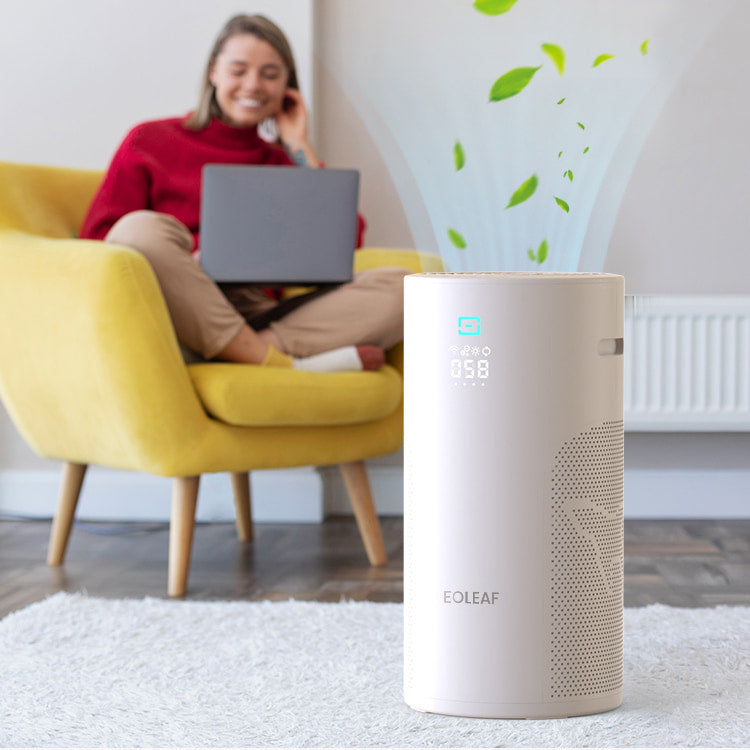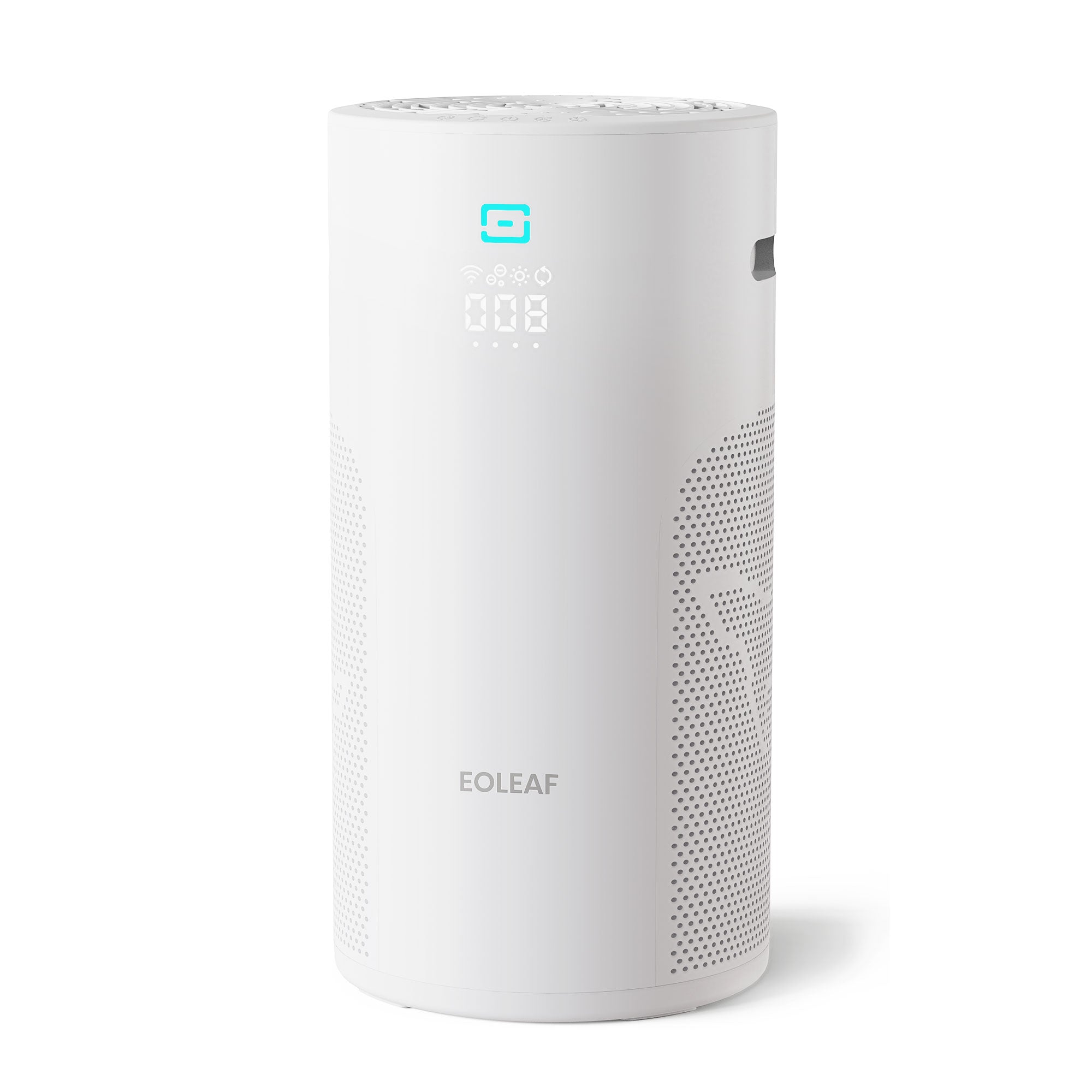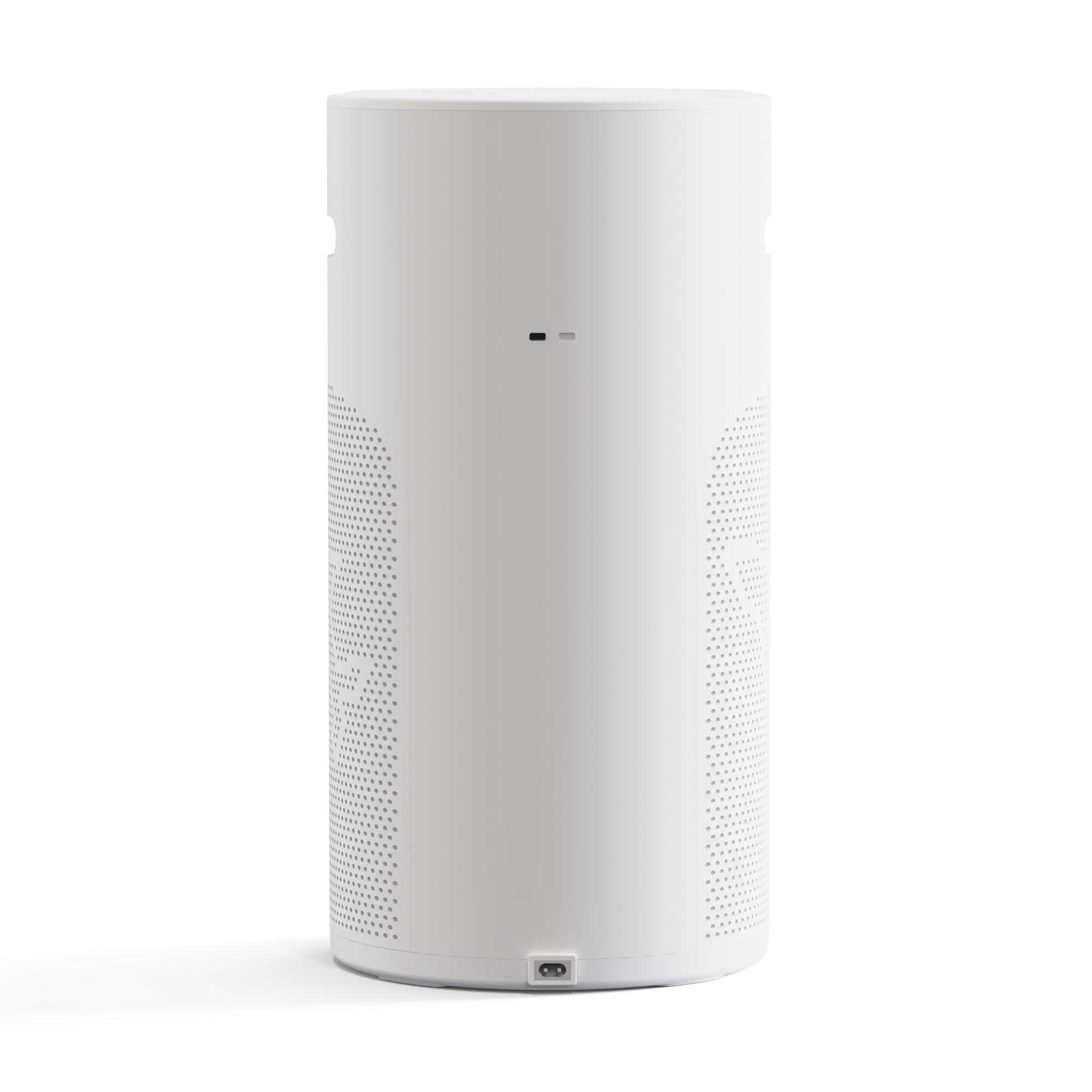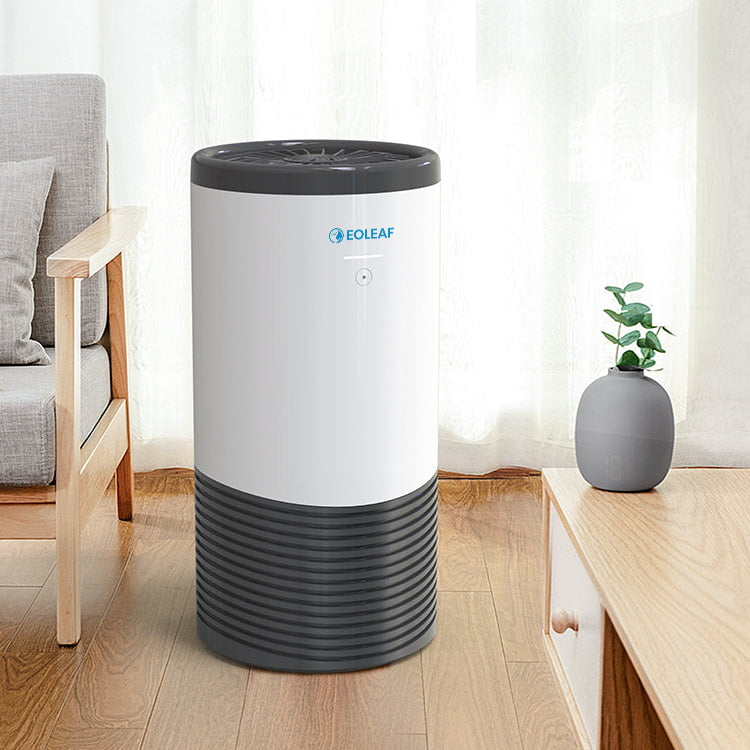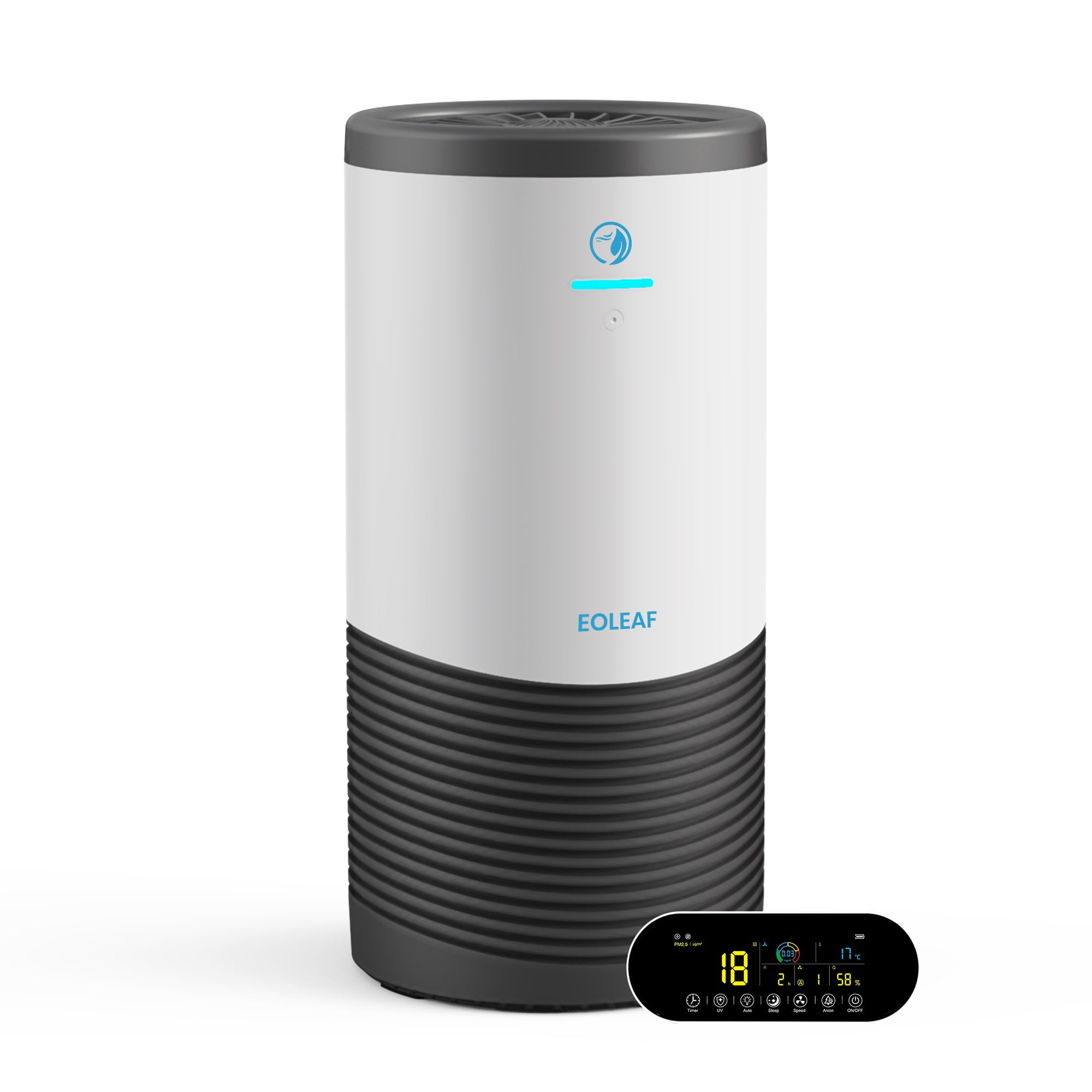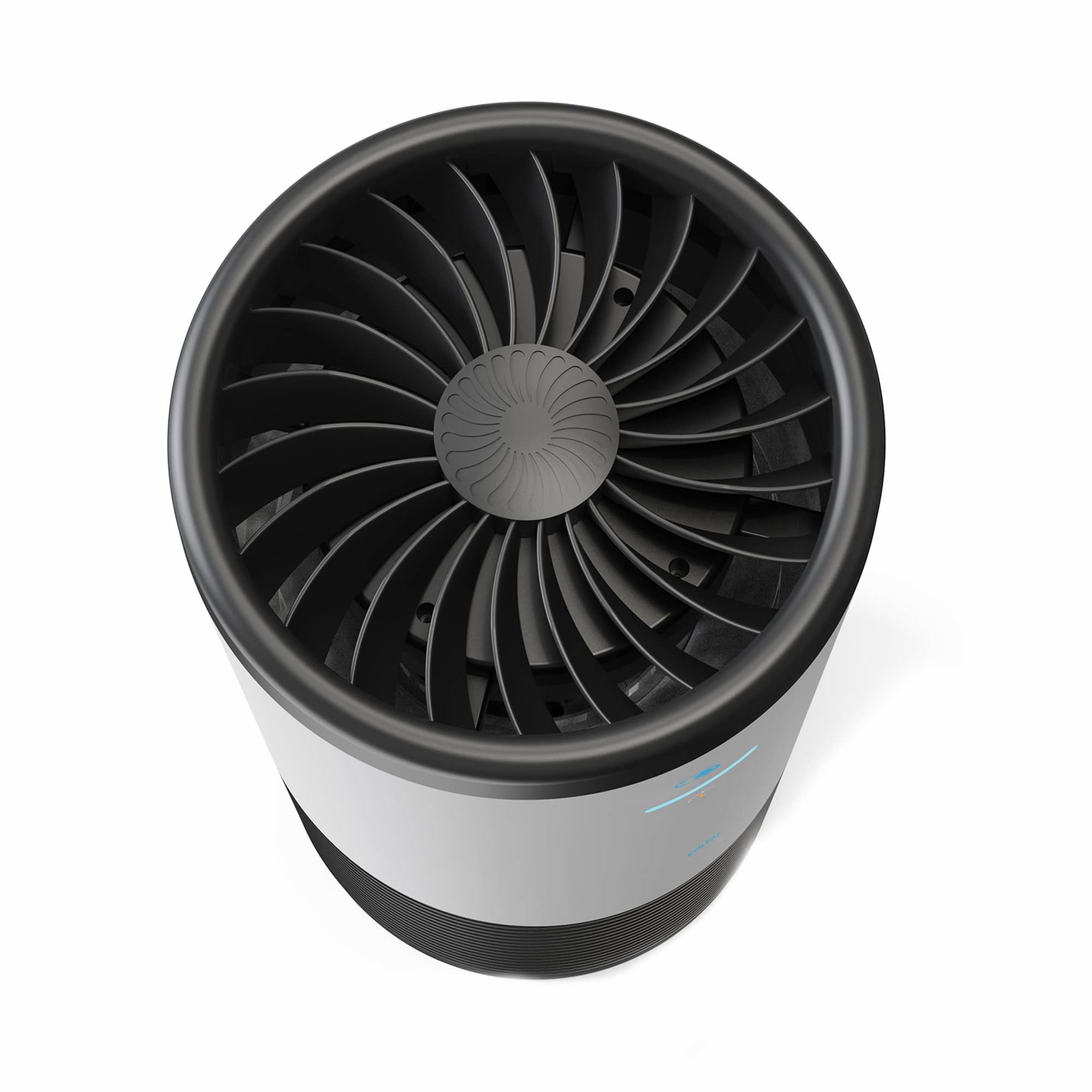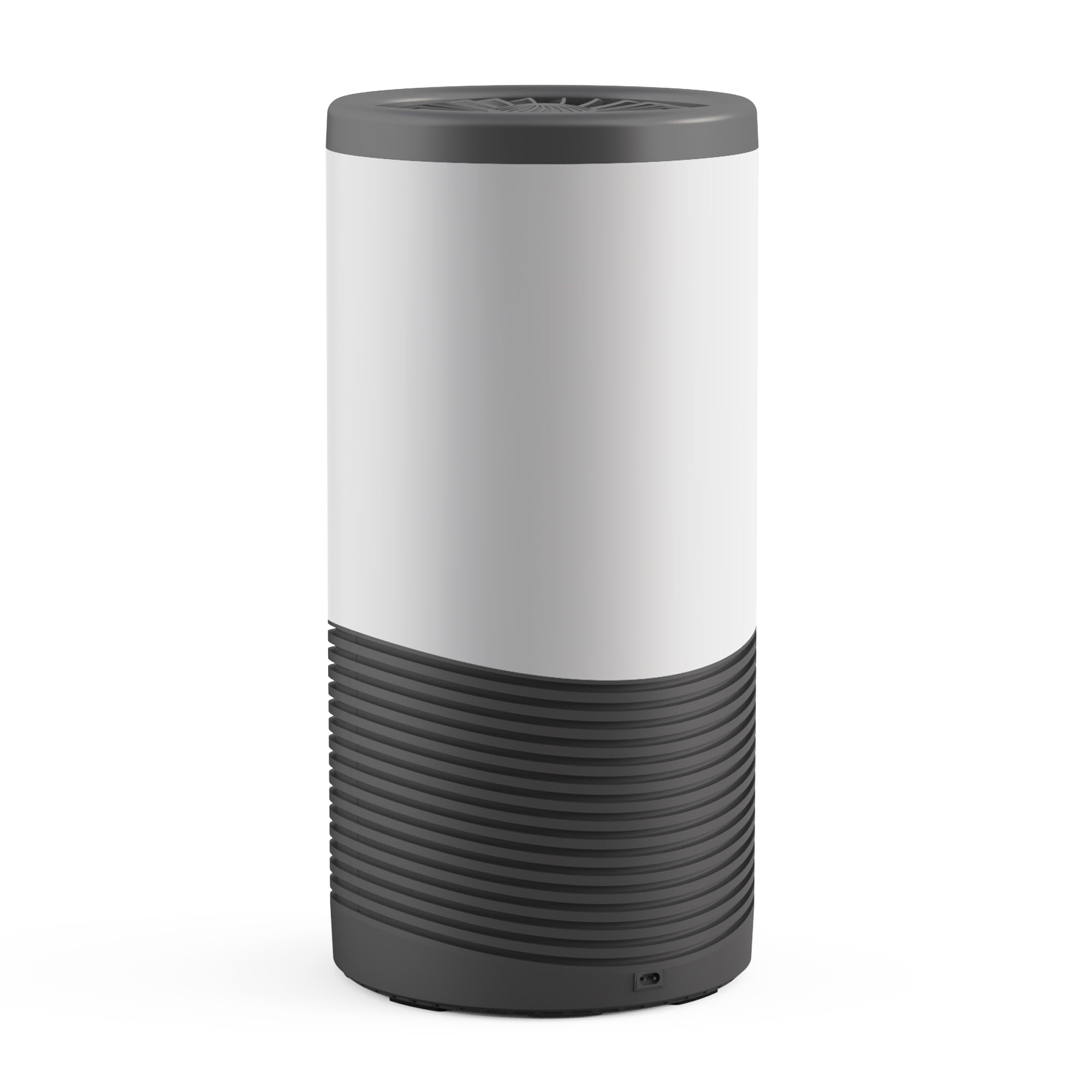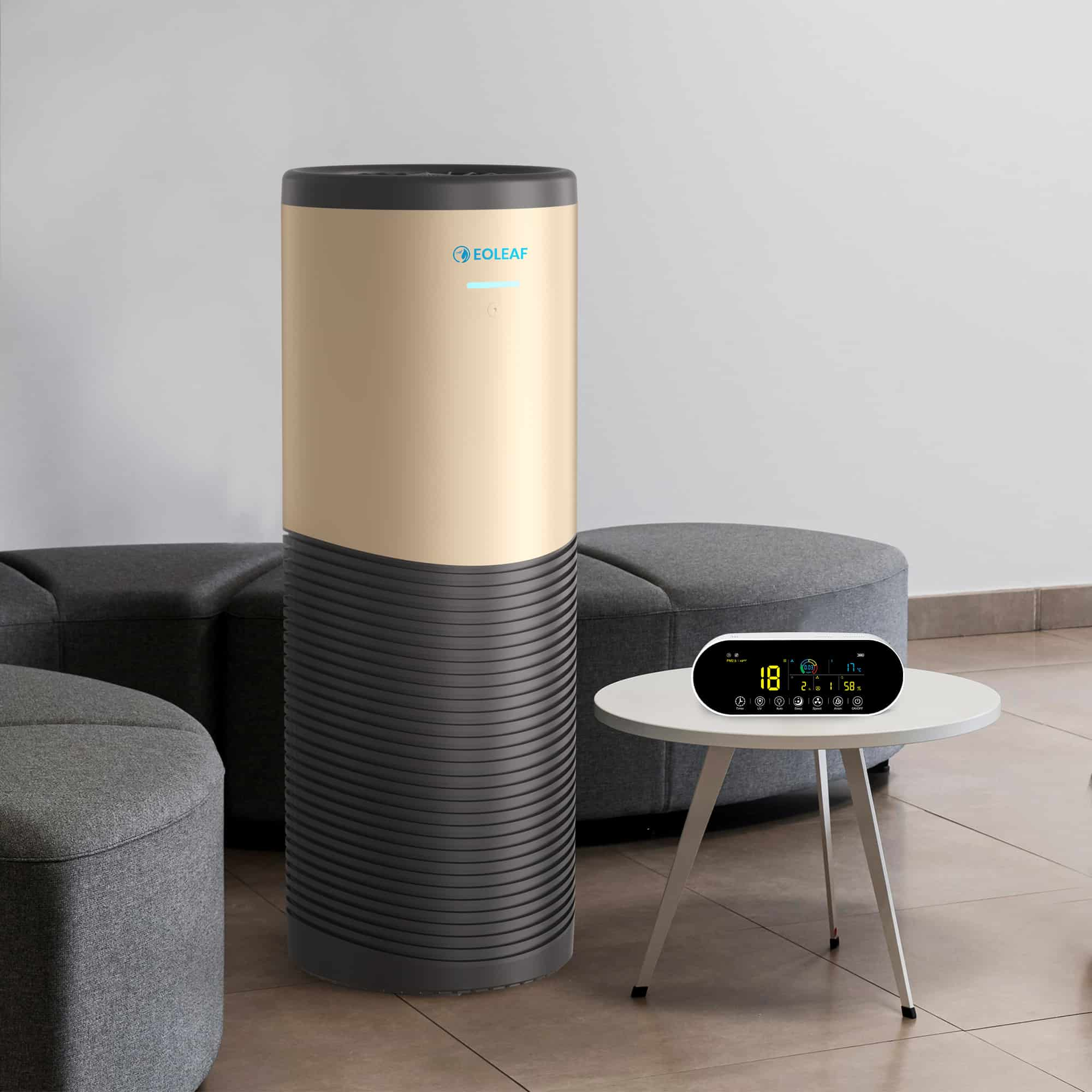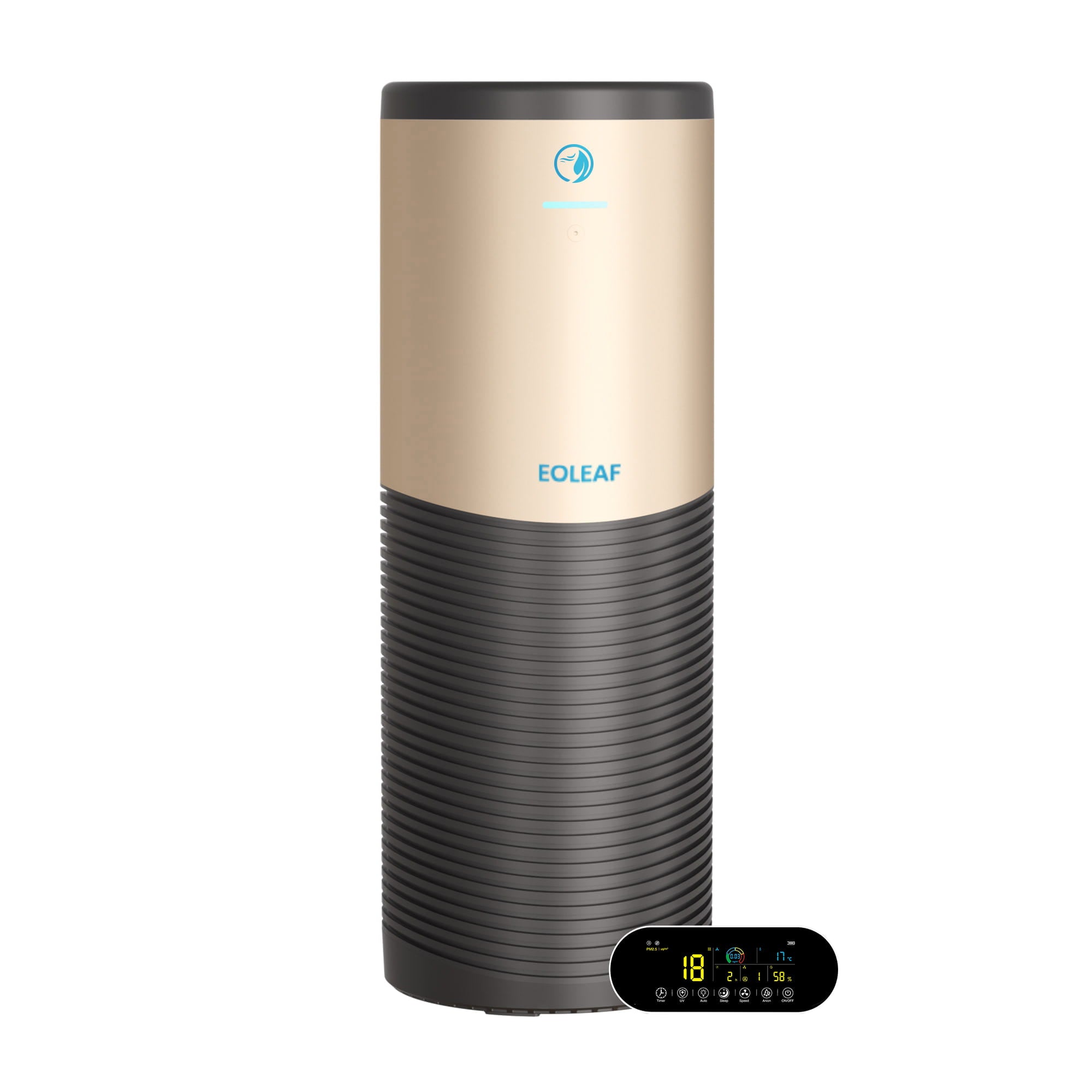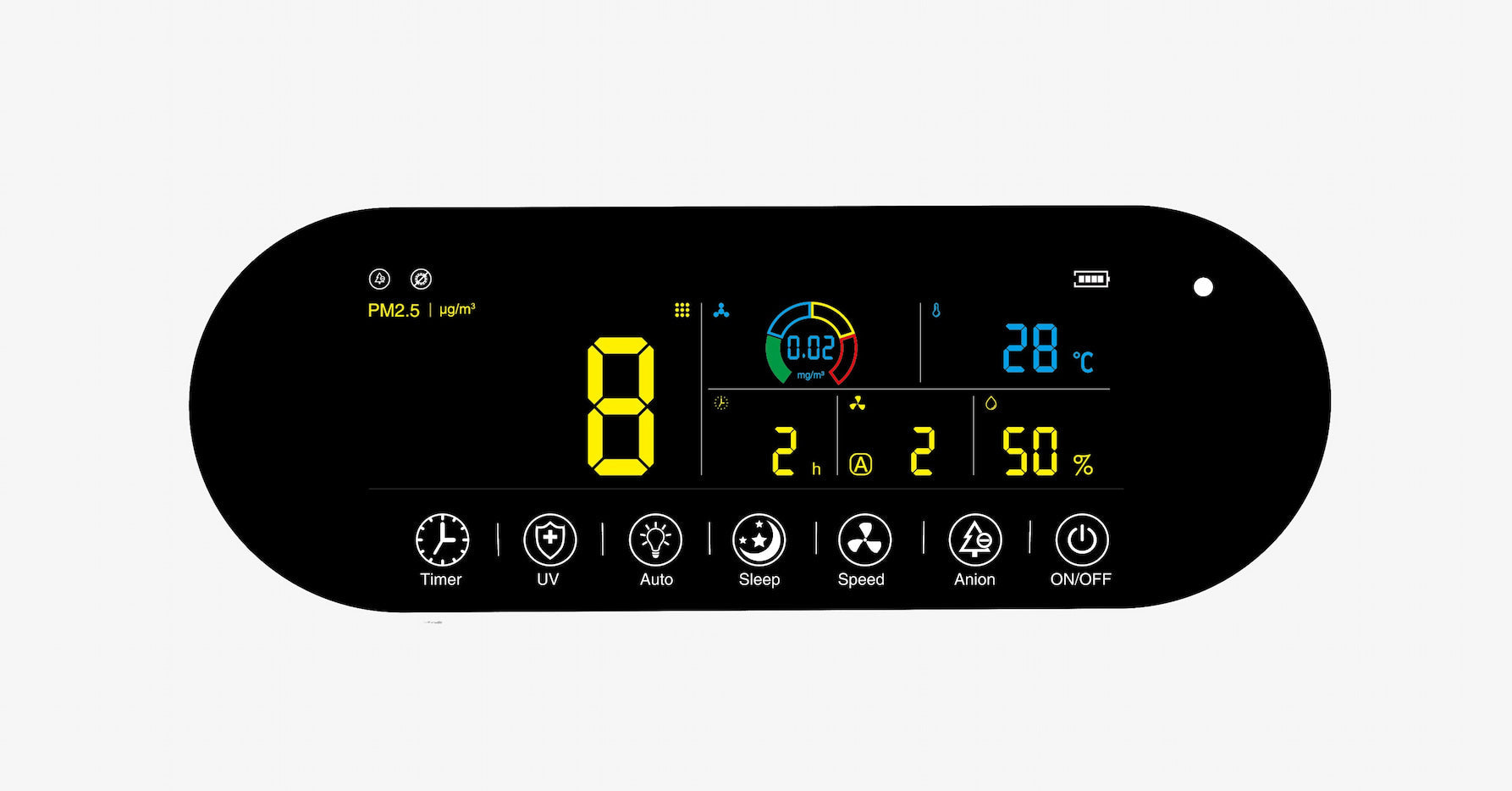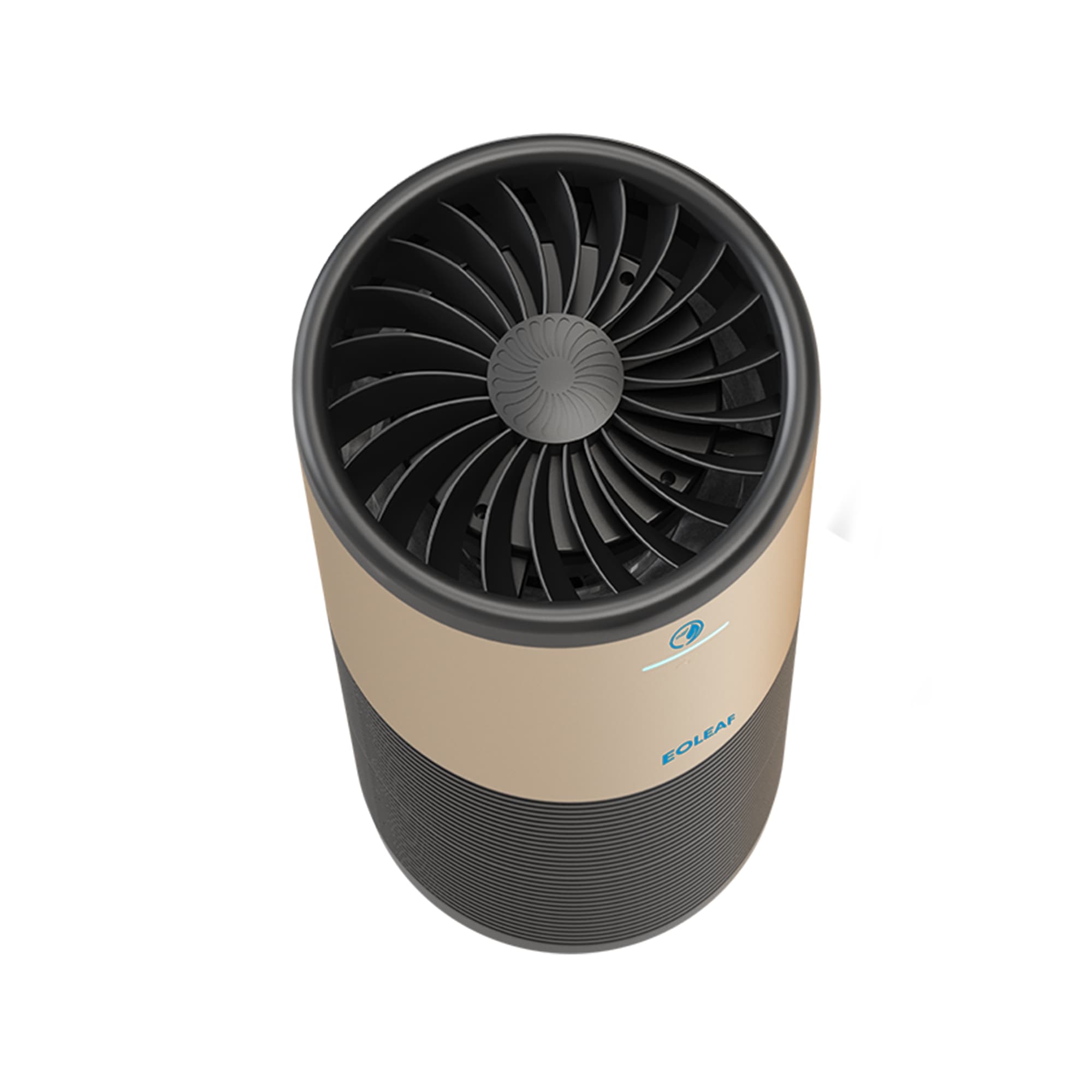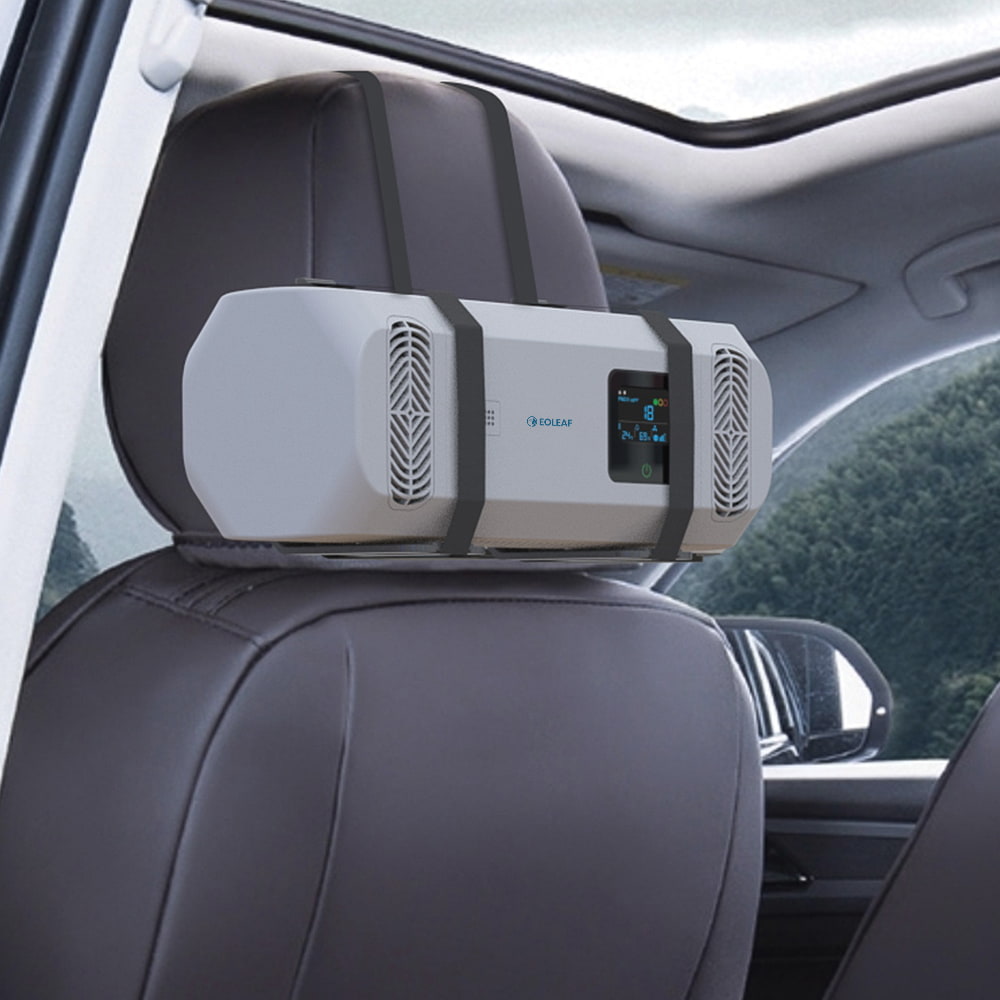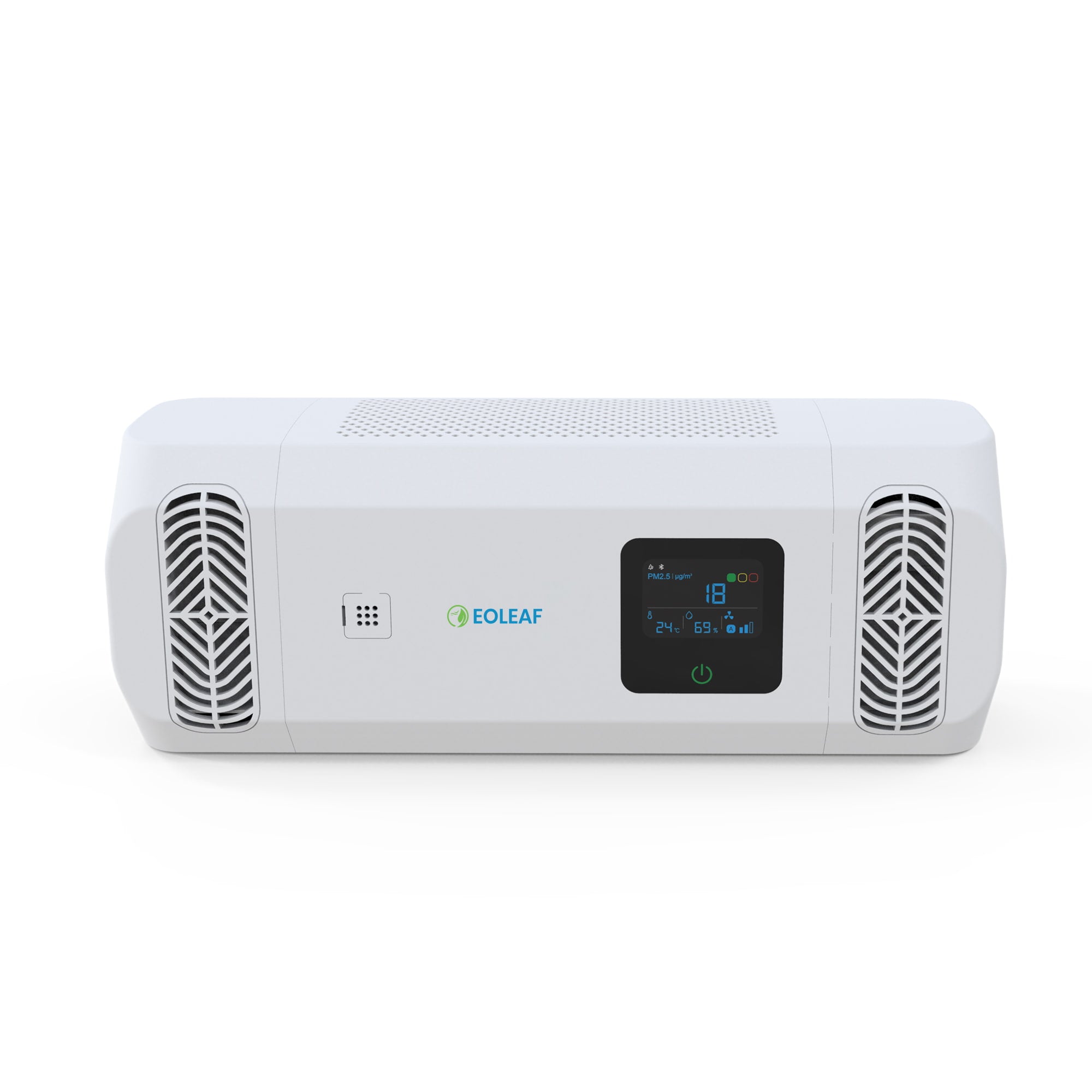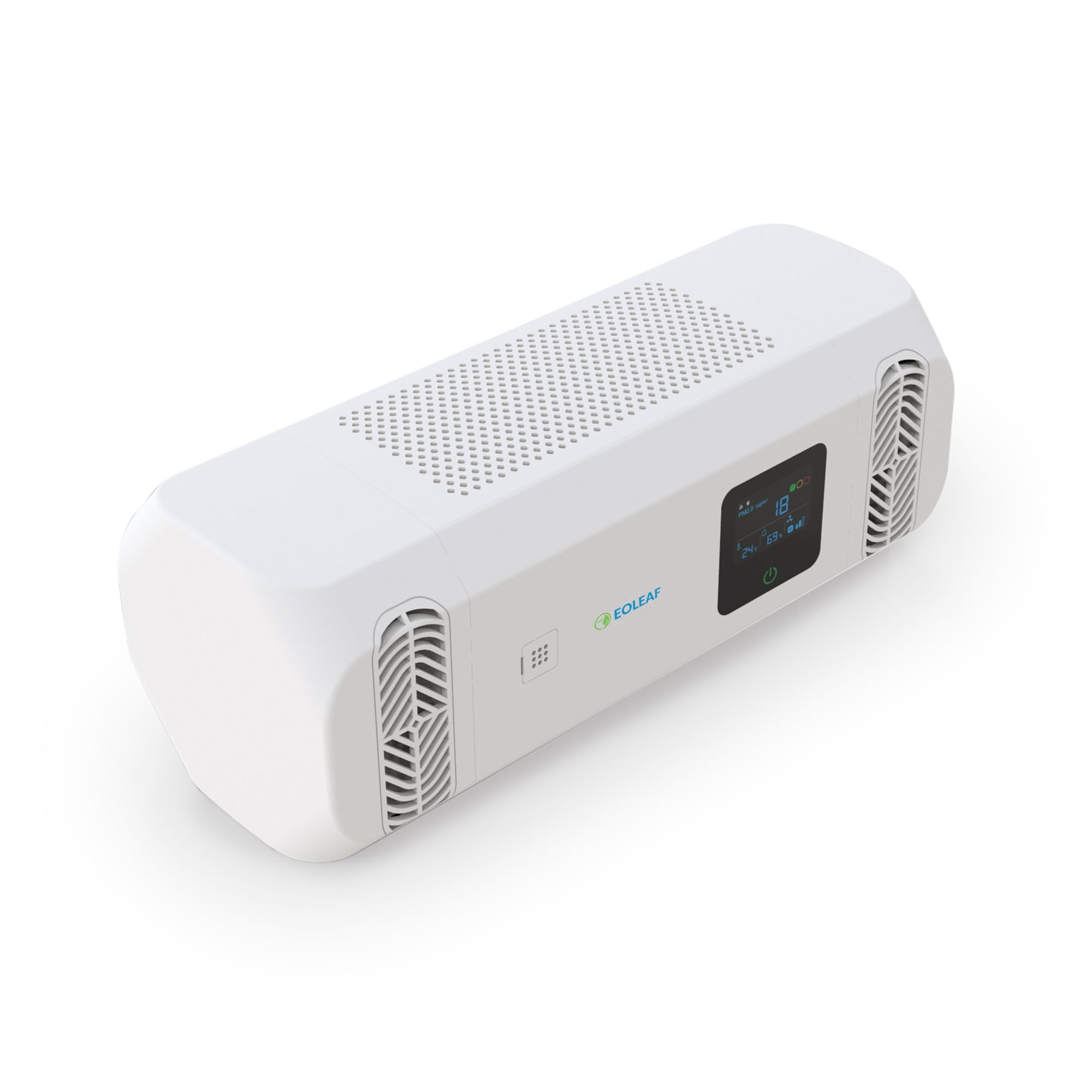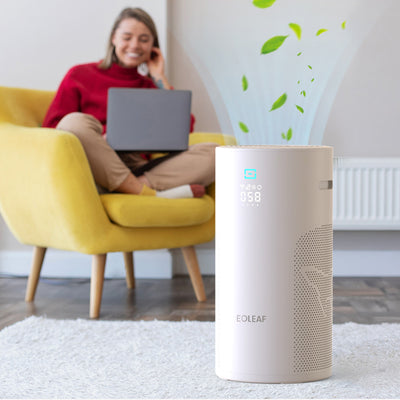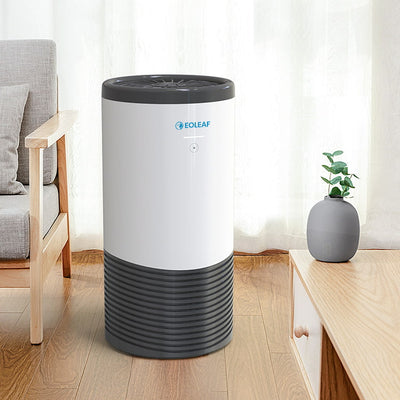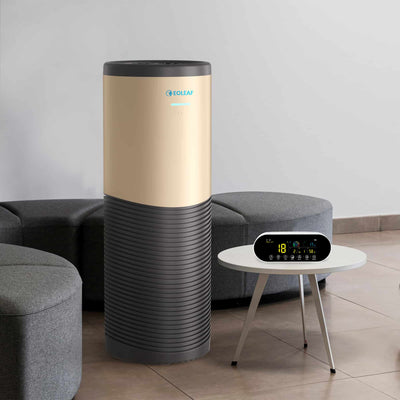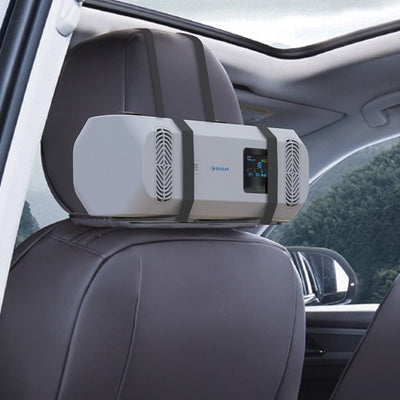Ionisers - what do they do?
What are air ionisers?
Air ionisers are devices that act as air cleaners by generating negative ions (particles with a negative charge) into the air. These particles seek out and attach to positive ions (particles with a positive charge), weighing them down and forcing them to fall to the ground or on surfaces where they no longer pose danger of being inhaled and entering the body. To avoid pollutants sticking to surfaces, some air ionisers contain intentional plates installed in the ioniser’s filter which act as conductors, pulling the particles back to the unit1,2. The end goal of these units is to remove pollutants and improve indoor air quality, protecting our health from the dangers of air pollution.
How do negative and positive ions differ?
Although we rarely realise it and it is not always known information, our environments are bathed in different electrically charged particles. We encounter two types of ions throughout our lives: positive and negative. Surprisingly enough, despite their name, studies show that positive ions are associated with polluted environments and adverse effects on health. Negative ions are associated with clean air and positive well-being.
Despite whether or not we live in an urban or polluted environment (where positive ions are the most present), we are constantly surrounded by positive ions. They are generated, sometimes in large quantities which are then released into the ambient air, by our screens, household appliances, tobacco usage, or even heating systems. In enclosed spaces, they can quickly accumulate in the air and on surfaces (in your house or flat, an office, or car). Regular positive ion exposure can cause various unpleasant health symptoms, some of which include fatigue, headaches, nausea, or a general feeling of malaise.

Negative ions, on the other hand, make us feel good. Some ways by which they have a positive effect on our physiology are by 1) promoting exchanges between cells with electrically charged membranes, 2) encouraging the penetration of oxygen in the lungs (which, as you may remember from chemistry class, is negatively ionised), and 3) stimulating enzyme action and neuromediator secretion (serotonin) and hormones (cortisol). The presence of negative ions in our surroundings can decrease our levels of stress, improve our concentration, help us sleep more easily, and/or make us feel great in general. Negative ions are commonly found in natural settings such as the mountains, the seaside, the forest, or even places that are basked in sunlight. As expected, these are places where we generally feel at peace.
The benefits of Eoleaf air purifiers:
-
Powerful HEPA-certified filter (up to 670 m3/hr)
-
Discreet and elegant design
-
Easy to use (equipped with Automatic mode) and does not require installation or assembly
-
Can be placed anywhere in your space thanks to our 360° technology
-
Real-time air quality data
Why are standalone ionisers not recommended?
Standalone ion generators (meaning devices not offering any filtration or air purification capabilities) are useful in removing some fine particulates, particularly those from tobacco smoke. They also help reduce concentrations of some volatile organic compounds (VOCs) like xylenes3.
However, when used as the sole technology in an ioniser device, ionisation cannot combat gases or odours. They are also incapable of removing coarser particles like dust, pollen, and mould spores from the air. This makes them an ineffective choice for individuals who are trying to fight allergies and/or improve asthma symptoms and reduce asthma attacks.
- Asthma attacks are often triggered by airborne allergens like dust, pollen, and mould and its spores. It is important for a device to target these allergens if the goal is to alleviate asthma symptoms and reduce asthma attack frequency.
One of the biggest concerns about ion generators is that many of them emit ozone. Ozone, a secondary pollutant and powerful lung irritant, reacts with other air pollutants in the presence of sunlight. Ozone exposure may lead to throat irritation, coughing, difficulty breathing, shortness of breath, chest pain, and reduced lung function in the long term. It may also aggravate asthma symptoms and asthma attacks, as well as other respiratory conditions like chronic obstructive pulmonary disease (COPD) by inflaming the lungs.
A 2008 study found that ozone-emitting ion generators ‘initiate reactions with certain unsaturated organic compounds’, leading to the production of ultrafine and fine particles and free radicals4. Rather than removing pollutants from the air as they claim to do, when ion generators emit ozone, they counterproductively add pollutants to the air, putting your health at risk.

Benefits of using an air purifier with an ionisation feature
How do negative ions work at removing fine particles?
Negative ions (negatively-charged ions, or ‘anions’), when diffused into a room, attach themselves to fine particles (neutral or positively-charged ions) suspended in the air. This is yet another example of electrostatic attraction. Once the negative ions attach themselves to the fine particles, this will lead to the disintegration of the fine particles or weigh them down and cause them to fall to the ground, safe from inhalation. Fine particles, as a result, are removed from the air you breathe.
Air cleaners with an ionisation feature are an effective method to control pollution
The benefit of purchasing an air purifier with an ionisation feature is that it allows you to harness negative ions’ ability to remove fine particles and, thus, improve indoor air quality. Of course, you need to ensure that your air cleaner is ozone-free certified. (Eoleaf’s devices are all ozone-free certified!).
A 2018 systematic literature review discovered that negative ions are effective in removing multiple types of airborne pollution. Firstly, unlike standalone air ionisers, air purifiers containing ionisation technologies work to alleviate allergy symptoms for those suffering from allergies (removing both fine and coarse particle allergens like dust and dust mites, pollen, and mould and its spores). One of the studies analysed found that air cleaners with ionisation technologies reduce airborne dust counts by 46%, improving allergies5. The review also made some dramatic findings in other studies regarding negative ions’ ability to reduce particulate matter (PM) concentrations:
- Negative ions reduced PM concentrations from 800 µg/m3 to 50 µg/m3 in a chambered environment6
- Within one hour, more than 80% of particles sized 0.1 or 1 mm were removed7
- Within six minutes of negative ion treatment, 93 to 97% of smoke particles were removed8
- Negative ions can remove around 95% of respirable particulate matter found in indoor air9
One additional 2022 study analysed an ionising air purifier’s ability to fight against bacteria and viruses in a classroom. It found that, with five devices installed in the classroom, infection risk of bacteria and viruses was reduced by 23% thanks to the presence of ionisation technologies10.

These studies provide an excellent insight into the efficacy of negative ions in fighting indoor pollutants and protecting your health.
Eoleaf’s ionisation feature
(The article continues below)
NeoPur 400 air purifier
40 m² (450 sq ft) coverage area - Smart & Connected
TeraPur 600 air purifier
80 m² (850 sq ft) coverage area - Ultimate all-in-one
AltaPur 700 air purifier
120 m² (1300 sq ft) coverage area - Professional model
PurCar air purifier
HEPA H13 Filter & Ioniser - For all vehicles
Eoleaf air purifiers are two-in-one devices, serving as both purifiers and air ionisers for optimal improved indoor air quality. Our design is simple, using a powerful fan to pull in polluted air and the same powerful fan to recirculate purified air back into your space.
How does the ionisation feature work?
Our devices use bipolar needle ionisation technology with a voltage of 6.0 kV. This technique was developed over twenty years ago and does not emit harmful levels of ozone, or does so only at an extremely low level, unlike corona discharge ionisation.
The ionisation technology used in our products is particularly powerful. We use an innovative design that uses eight separate conduction filaments, a feature that generates more than 20 million ions per cm3, 6.3 million at a distance of 1 metre and 0.5 million at a distance of 3 metres, all with a total range of 5 metres.
With Eoleaf’s air purifier models, when you turn on the device, the ‘ionisation’ feature is activated by default. Simply press the ‘Anion’ button on the control terminal to deactivate or reactivate it. When the function is activated, the icon appears at the top left of the screen.
Ionisation is just one part of Eoleaf’s 8-step air filtration technology. Our devices also offer HEPA-certified filters, activated carbon filters, bamboo filters, UVC sterilisation technologies, and photocatalysis technologies all in one, convenient filter block!
- Note: HEPA air purifiers guarantee filtration of 99.97% of air pollutants down to a size of 0.01 microns. Keep in mind that HEPA air purifiers that claim to be ‘HEPA-type’ do not undergo the same third-party testing and cannot be guaranteed to filter the same amount of pollutants that a certified HEPA air purifier can.
Eoleaf’s devices filter out the following indoor air pollutants:
- Germs (bacteria and viruses like COVID-19)
- Allergens (pollen, dust, dust mites, mould and its spores, pet hair and dander)
- Fine particle pollution (PM10, PM2.5, PM0.1)
- Chemical pollution (like VOCs)
- Unpleasant odours thanks to its activated carbon filter

Where should you place your air cleaner?
You might be wondering: where is the best place to install my air cleaner to benefit most from the purified air it brings? A location where the air will circulate around the device, preferably in the centre of a room, is ideal. We recommend living rooms or bedrooms since this is where we tend to spend the most amount of time in our homes. The room in your home where you tend to spend the most amount of time is best! Read more about ideal air purifier placement here.
Also, be sure that your device is free of obstacles and that nothing blocks its fan inputs or outputs. Using the device for 2 to 3 hours per day in your home should be sufficient for most needs, but if you are prone to allergies or own a business, leaving it running is advised.

Frequently asked questions
Are there any health risks associated with using ionisers?
Certain standalone ionisers emit ozone. Exposure to ozone may lead to negative health effects like throat irritation, breathing difficulties, shortness of breath, and chest pain. Ozone-emitting ion generators may also produce fine particles which aggravate asthma and other respiratory conditions. Ensure that your ioniser is certified ozone-free before purchasing.
Can ionisers remove odours from the air?
No. Unless it is a dual ioniser-air purifier, ionisers alone cannot combat gases or odours because they are not equipped with technologies capable of doing so (activated carbon filters). Devices like Eoleaf’s, on the other hand, are 2-in-1 air purifiers-ionisers, making them effective at removing air pollutants, odours, and chemical pollution like VOCs.
Are ionisers effective against allergens like pollen and pet dander?
No. Ionisers are known for their action against fine particle pollution (PM10 or smaller). Negative ions attach themselves to fine particles and molecules of positive polarity. Once attached, they will either disintegrate these positively-polar particles or will weigh them down and drop them to the ground where they no longer pose a danger of being inhaled. Pollen and pet dander are typically considered to be 'coarse particles', or those larger than particles of this size.
How do ionisers handle bacteria and viruses in the air?
This is a topic that is still under investigation. Early scientific studies have shown promising results in ionisation’s ability to remove pathogens from the air: negative ions have been shown to attack airborne viruses like rotavirus and influenza.
What is the difference between an ioniser and an ozone generator?
Ionisers work by generating and releasing negative (negatively-charged) ions into the air. Negative ions are attracted to positive ions that are often found in air pollution. Negative ions bind to positive ions and either disintegrate them or pull them down to the ground, far away from our lungs. Ionisers are completely safe when they are certified ozone-free.
An ozone generator works by taking in oxygen (O2) from the air and giving it a strong electrical charge. The electrical charge forces oxygen molecules to arrange into ozone (O3). Studies performed on ozone generators have found them to be unsafe because ozone does not react with common household pollutants. Read more here.
Can ionisers help with asthma or other respiratory conditions?
Yes! Ionisers help to remove irritating fine particles from the air. These fine particles aggravate asthma and other respiratory symptoms. When these particles are no longer present in the air, it significantly helps symptoms to subside.
Do ionisers produce any side effects or harmful by-products?
Some ionisers produce ozone. This is an irritating air pollutant that may lead to respiratory symptoms like coughing, throat irritation, difficulties breathing, and chest tightness, among others. Be sure that your ioniser is certified ozone-free before purchasing.
Resources
1 Cheng Qian 2021 J. Phys.: Conf. Ser. 2029 012026
2 What are ionizers and other Ozone Generating Air Cleaners?. Environmental Protection Agency. (2023, April 10). https://www.epa.gov/indoor-air-quality-iaq/what-are-ionizers-and-other-ozone-generating-air-cleaners
3 Phys.org. (2021, March 16). Study uncovers safety concerns with Ionic Air Purifiers. Colorado State University. https://phys.org/news/2021-03-uncovers-safety-air-purifiers.html
4 Waring, M. S., Siegel, J. A., & Corsi, R. L. (2008). Ultrafine particle removal and generation by Portable Air Cleaners. Atmospheric Environment, 42(20), 5003–5014. doi:10.1016/j.atmosenv.2008.02.011
5 Jiang SY, Ma A, Ramachandran S. Negative Air Ions and Their Effects on Human Health and Air Quality Improvement. Int J Mol Sci. 2018 Sep 28;19(10):2966. doi: 10.3390/ijms19102966. PMID: 30274196; PMCID: PMC6213340.
6 Niu J.L., Tung T.C.W., Burnett J. Quantication of dust removal and ozone emission of ionizer air-cleaners by chamber testing. J. Electrostatics. 2001;51:20–24. doi: 10.1016/S0304-3886(01)00118-8.
7 Lee B.U., Yermakov M., Grinshpun S.A. Removal of fine and ultrafine particles from indoor air environments by the unipolar ion emission. Atmos Environ. 2004;38:4815–4823. doi: 10.1016/j.atmosenv.2004.06.010
8 Sawant V.S., Meena G.S., Jadhav D.B. Effect of negative air ions on fog and smoke. Aerosol Air Qual. Res. 2012;12:1007–1015. doi: 10.4209/aaqr.2011.11.0214.
9 Sawant V.S. Control of respirable particles in indoor air with portable negative air ion generator. IOSR J. Environ. Sci. Toxicol. Food Technol. 2013;3:28–31. doi: 10.9790/2402-0332831.
10 Ren C, Haghighat F, Feng Z, Kumar P, Cao SJ. Impact of ionizers on prevention of airborne infection in classroom. Build Simul. 2023;16(5):749-764. doi: 10.1007/s12273-022-0959-z. Epub 2022 Dec 2. PMID: 36474607; PMCID: PMC9716175.
Eoleaf's range of air purifiers
NeoPur 400 air purifier
40 m² (450 sq ft) coverage area - Smart & Connected
TeraPur 600 air purifier
80 m² (850 sq ft) coverage area - Ultimate all-in-one
AltaPur 700 air purifier
120 m² (1300 sq ft) coverage area - Professional model
PurCar air purifier
HEPA H13 Filter & Ioniser - For all vehicles

